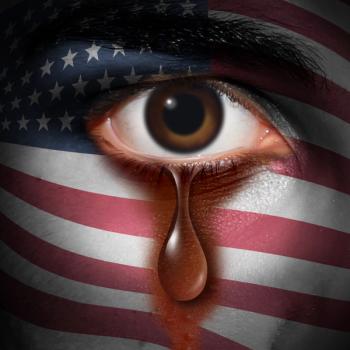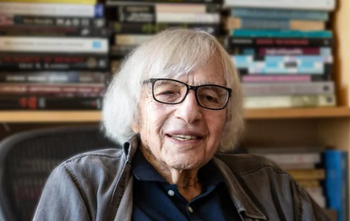
- Vol 31 No 12
- Volume 31
- Issue 12
Fixing the Mental Health System: Snake Pits, Dungeons, and Back Alleys
How do we catch up with other developed countries to create a compassionate, cost-effective mental health system? Psychiatric Times posed this question to some of the leading experts in the field.
[[{"type":"media","view_mode":"media_crop","fid":"30552","attributes":{"alt":"","class":"media-image media-image-right","id":"media_crop_9490462632164","media_crop_h":"190","media_crop_image_style":"-1","media_crop_instance":"3208","media_crop_rotate":"0","media_crop_scale_h":"199","media_crop_scale_w":"200","media_crop_w":"191","media_crop_x":"3","media_crop_y":"78","style":"width: 169px; height: 169px; float: right;","title":" ","typeof":"foaf:Image"}}]]Written 65 years ago, Mary Jane Ward’s novel The Snake Pit had a profound impact on how our society regarded and treated people with severe mental illness. Based on her own experiences as a patient during an 8-month stay at the Rockland Psychiatric Center in Orangeburg, NY, Ward vividly described the dreadful overcrowding, understaffing, and dehumanization that was then typical of state hospitals throughout the country. The run-away success of the best-selling book (and the Academy Award–winning movie based on it) shamed many states into making dramatic reforms.
Soon, deinstitutionalization was the big new idea-the way to provide a much brighter future for the most vulnerable in our society who had previously been so shamefully neglected. The new field of community psychiatry would liberate warehoused inpatients from antiquated, snake pit hospitals and provide them the dignity of outpatient treatment and decent housing. Patients would receive psychotherapy and psychosocial support and would benefit from newly available psychiatric medications. And, as an added bonus, deinstitutionalization would be cost-neutral because hospitals were more expensive than outpatient care.
The dream has worked remarkably well in many other countries, but it has turned into a bitter nightmare in the US. State governments have reallocated much of the saved hospital funds away from mental health to reduce taxes or to pay for other items in their budgets. Community mental health centers were either never realized at all or starved, or privatized and allowed to steer away from the more difficult pa-tients and focus instead on healthier, wealthier patients.
De-institutionalization turned far too often into trans-institutionalization-moving the patient from a snake pit hospital into a dungeon-like prison. The number of state hospital beds has been reduced from 650,000 to 65,000, but the number of prison beds housing the severely mentally ill has increased by a like amount. The crimes committed by mentally ill prisoners are usually trivial, nuisance offenses occasioned by lack of treatment and housing (eg, being noisy on the street, sleeping in public, smelling badly, stealing food).
The police have been forced to assume the role of mental illness first responders. They find it a waste of time to take patients to emergency departments because there are usually no psychiatric beds available and at best an outpatient appointment may be weeks away. Jail becomes the default solution. Consequently, the low tolerance for disorder introduced by “broken window policing” has fallen most heavily on the severely mentally ill. No wonder police associations have become the strongest advocates for adequate psychiatric treatment in the community.
I have been in both places and can assure you that the fate of psychiatric patients in prison dungeons is much worse than was their plight in snake pit hospitals. Our patients do not fit in well with the rituals of prison life. They disproportionately get assigned to solitary confinement, which can drive anyone crazy, but is particularly crazy-making for those who have severe mental disorders. I have seen cell after cell smeared with excrement and mentally ill prisoners shouting their lungs out or drugged into stupor. And, our patients are especially vulnerable to physical and sexual abuse. They are disproportionately represented as victims of the 200,000 rapes that occur in prisons each year.
Then there are the back alleys. There are perhaps 300,000 home-less mentally ill persons in our country-most are homeless for the simple reason that decent housing is not available. The success of Housing First programs makes it clear that adequate funding for decent housing would dramatically reduce incarceration and facilitate the participation of these patients in treatment. Nothing could be dumber or less humane than states spending a fortune on expensive prisons and simultaneously badly shortchang-ing the much more cost-effective mental health and housing services that would make them much less necessary.
Advocacy for the severely mentally ill has been fragmented and (judging by our pathetic nonsystem) largely ineffective. At this time, the US may be the worst place ever to be severely mentally ill. Some of this failure is inherent to the difficulty in getting our competitive, individualistic society to care about its most disadvantaged. But the advocates have also been divided by an unnecessary and harmful civil war between medical model boosters and recovery boosters. This is unnecessary because one size does not fit all (we need both models working in complementary harmony). And, it is harmful because the most severely mentally ill get lost in the shuffle. How can anything be more important than getting people who do not belong there out of prison dungeons and off back alley streets?
It is too bad we do not have a Mary Jane Ward to get the public aroused. But thankfully we do have Psychiatric Times to facilitate a discussion of the possible solutions. How do we catch up with other developed countries to create a compassionate, cost-effective mental health system? Psychiatric Times posed this question to some of the leading experts in the field. We also hope that many readers will contribute their suggestions. After we have collected all the responses, I will try to find a middle ground that we can all support.
Articles in this issue
almost 11 years ago
What Role Does (Should) Lithium Play in Suicide Treatment/Prevention?almost 11 years ago
Patient Suicide: Impact on Cliniciansalmost 11 years ago
The Relationship Between Antidepressant Initiation and Suicide Riskalmost 11 years ago
Auditory Hallucinations in Adult Populationsalmost 11 years ago
Therapeutic Neurostimulation and Schizophreniaalmost 11 years ago
What Psychiatrists Should Know About Ebolaalmost 11 years ago
Compromised Confidentiality Is Harmful: Military Owes Proof to the Contraryalmost 11 years ago
Mobile Apps for Mental HealthNewsletter
Receive trusted psychiatric news, expert analysis, and clinical insights — subscribe today to support your practice and your patients.














